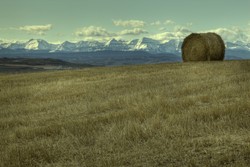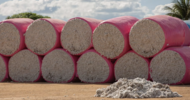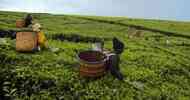Watershed Sentinel | 7 March 2013
by Susan MacVittie
In March 2011, ethnic Maya Q’eqchi communities of smallholder farmers in southern Guatemala were violently evicted by state security forces from land they had farmed for generations. About 3,200 people from 14 communities in the Polochic valley were forced off land they believed they had a right to live and work on. Within months, hundreds of hectares of the lush valley in the province of Alta Verapaz were being planted with sugar cane that would be turned into ethanol for European cars. Today, displaced families live by the side of the road with no access to shelter or food.
It is a scenario that has been occurring in Brazil, Mozambique,and many other developing countries. Since 2008, when global food prices suddenly spiked, there has been an upsurge in land investment by transnational corporations and private investors who purchase or lease large tracts of fertile land, along with its minerals and water, displacing viable rural communities of small-scale farmers.
Food, feed, biofuel and other industrial commodities are produced for the international or domestic market. Such land deals are often associated with low levels of transparency, consultation, and respect for the rights of local communities.
In the last three years China has bought 7.5 million acres of farmland, mostly in Africa. Saudi Arabia has spent $800 million on overseas farms. Japan is also buying huge farms in both Africa and South America.
Water
Professor A. Haroon Akram-Lodhi, Chair of the Department of International Development Studies at Trent University and author of Hungry for Change: Farmers, Food Justice and the Agraian Question, told the Watershed Sentinel, that access to water is a motivating factor in these land grabs. “Around the world a lot of land grabbing is actually about gaining control of water, which is far more scarce than land; without water, you cannot farm, and a lot of land grabbers are from water scarce countries. This has been acknowledged by the head of Nestle.”
International agencies such as Oxfam and GRAIN have been following this trend and have documented that two thirds of land grabs are occurring in Africa. The Canadian Foodgrains Bank estimates that, between 2000 and 2010, there have been land deals for over 200 million hectares of land in developing countries. That’s almost three times the amount of farmland in Canada. Investment is concentrated in areas where land is inexpensive, but still has good potential for crop production, including irrigation and access to markets.
Biofuel
While some of the land is being used for food production intended to export back to the home country (especially by Middle Eastern countries with little agricultural potential), biofuel crops such as palm oil, sugar cane and maize are on the rise. In fact, governments’ need to maintain renewable energy targets have helped spur a rush for land. The European Union (EU) member-states approved the Renewable Energy Directive in 2010, which expects to see the EU biofuels’ consumption double between 2010 and 2020. EU countries do not have enough land available to meet their targets, which means biofuel crops have to be grown outside of Europe. A 2011 report commissioned by G20 leaders found that the demand for food and feed crops for the production of biofuels is a significant factor in rising food prices and food price volatility globally. As well as losing their land and their livelihoods, indigenous people are forced to buy food at local markets where increased demand and reduced supply drives up local food prices, pushing more people into hunger. Biofuels may not be the green solution to climate change after all.
Policy and the World Bank
Though land grabbing is not a new phenomenon, the character, scale and pace of the recent wave of land grabs is distinct because it is tied to shifts in power and production in the global economy. The global rule-making institutions of the UN Food & Agriculture Organization (FAO), the Committee on World Food Security and the World Bank, have been busy promoting large-scale private-sector led investments in developing country agriculture. The flagship project is the recently negotiated UN Voluntary Guidelines on the Responsible Governance of Tenure of Land, Fisheries and Forests. Other projects are the Global Agriculture and Food Security Program (a new multi-donor trust fund that encourages public and private investment in agriculture), the G8’s so-called New Alliance for Food Security and Nutrition, a development assistance program now spearheaded by the Obama administration, and the World Economic Forum’s Grow Africa initiative.
The World Bank plays a pivotal role in land acquisitions as a source of direct financial support for country governments and as a policy advisor to the governments of developing countries. Since 2008, the World Bank’s agricultural development strategy and official policy has supported large-scale investments as a means of improving agricultural productivity and economic growth. The G8 countries have provided the World Bank with resources and entrust it to manage a spate of new global agricultural development programs. However, these initiatives are often developed in countries with weak governance and regulations and selected by investors looking to secure land quickly and cheaply.
Communities in developing countries frequently lack government-recognized title to the land they farm or hold in common. This results in insecurity of tenure, especially for women who live in countries where, according to law or customs, they are unable to inherit land. The Mozambican farmers’ unions stated that soon land will become scarce for locals as the government leases more of it to foreign agribusinesses – displacing thousands of rural communities and smallholder farmers with no official title deeds to their land.
In February, the World Bank’s Compliance Advisor Ombudsman (CAO) released an audit showing that the World Banks’ International Finance Corporation (IFC) “knows very little” about the environmental or social impacts of its financial market lending, despite its objective of ensuring that any financing does not harm communities and the environment.
Oxfam have begun an online petition to ask the World Bank to help protect poor people’s rights by freezing its investment in large-scale land acquisitions while it sets a fair standard for others to follow. Oxfam Canada has also been calling on Canada’s representative to the World Bank, Finance Minister Jim Flaherty, to take a stand and put the issue of land grabs on the agenda.
The Canadian Connection
Institutional investors are extremely interested in Canadian land, which is far cheaper than in much of the world. Saskatchewan land has risen 20-25% in 2012 to $800-2000/acre for prime farms in southern Saskatchewan, but it is still less than $7000/acre in California or $6,000/acre in Brazil.
In a November 8, 2012 online Bloomberg Business article, Doug Emsley, president of Regina, Saskatchewan-based Assiniboia Capital Corp., the largest farmland investment company in the nation, with some 115,000 acres under management valued at about $90 million, said that every day he fields calls from potential investors, from pension funds or family businesses that want to buy “from inside and outside Canada.”
Fueling the farmland price pressure are large real estate investment syndicates, such as Calgary-based Prairie Merchant, controlled by former Dragon Den multi-millionaire Brett Wilson. “I see Saskatchewan farmland as a long-term hold,” Wilson told Western Investor, “with a limited supply of good, arable farmland and ever-increasing demand for food on a global basis.”
A major sticking point is the availability of land to foreign investors. Ontario, British Columbia and other, smaller Canadian provinces have no restrictions on foreign ownership of farmland. An unnamed investor with a US management company recently acquired almost four per cent of Nova Scotia’s land mass.
The prairie provinces, though, keep individual foreign investors from owning any more than 10 to 40 acres. In Saskatchewan, where restrictions are the toughest, land is seen as a natural resource that should not be controlled by outsiders, said Mark Folk, general manager of the provincial Farm Land Security Board. In some cases, said Folk, interest in Canadian land has spurred would-be buyers to establish Canadian residency.
Land grabs in Canada have not been well-documented. Provinces do not keep inventory on large-scale land acquisitions. This blind eye approach has some people, particularly farmers, worried.
Edward Sagan is a third generation Saskatchewan farmer and the Saskatchewan Regional Co-Ordinator of the National Farmers Union. Over the years he has watched as farmland prices rose and farmland was bought and leased back to farmers, which he compares to “the return to serfdom.”
Sagan and other farmers are skeptical farm acquisitions will turn a profit for shareholders. Buoyed by high commodity prices, some firms tout farmland as a better investment than gold, but farmers like Sagan know that farming is a long term investment, not a fast buck, and difficult to manage from an office tower in downtown Toronto.
Indeed, Toronto-based investment company, Sprott Resources, reported a net first quarter loss of $3.2 million in 2012 for One Earth Farms, a crop and cattle operation that leases First Nation land.
There are also speculations that buying Canadian farmland may be a smokescreen for access to fields of potash, oil and gas.
Against The Grain
While the National Farmers Union is starting to monitor land grabs in Canada, international organizations continue to lobby against global land grabs. In response to student pressure, Vanderbilt University in Tennessee took steps in February to withdraw its $26 million investment in EMVest, an agricultural corporation with farms in five sub-Saharan African countries.
Oxfam states that at least 15 Canadian companies have acquired agricultural or forest land in developing nations since 2000, including the Alberta Investment Management Corporation and the Quebec Pension Plan. A statement signed by over 60 environmental, development and farming groups call for pension funds and other financial institutions to stop land grabbing. Pension funds are reported to be the largest institutional “investors” in farmland worldwide and many pension contributors are not happy about how their savings are invested.
***
Susan MacVittie is Managing Editor of the Watershed Sentinel and is dedicated to reporting on social justice issues.
by Susan MacVittie
In March 2011, ethnic Maya Q’eqchi communities of smallholder farmers in southern Guatemala were violently evicted by state security forces from land they had farmed for generations. About 3,200 people from 14 communities in the Polochic valley were forced off land they believed they had a right to live and work on. Within months, hundreds of hectares of the lush valley in the province of Alta Verapaz were being planted with sugar cane that would be turned into ethanol for European cars. Today, displaced families live by the side of the road with no access to shelter or food.
It is a scenario that has been occurring in Brazil, Mozambique,and many other developing countries. Since 2008, when global food prices suddenly spiked, there has been an upsurge in land investment by transnational corporations and private investors who purchase or lease large tracts of fertile land, along with its minerals and water, displacing viable rural communities of small-scale farmers.
Food, feed, biofuel and other industrial commodities are produced for the international or domestic market. Such land deals are often associated with low levels of transparency, consultation, and respect for the rights of local communities.
In the last three years China has bought 7.5 million acres of farmland, mostly in Africa. Saudi Arabia has spent $800 million on overseas farms. Japan is also buying huge farms in both Africa and South America.
Water
Professor A. Haroon Akram-Lodhi, Chair of the Department of International Development Studies at Trent University and author of Hungry for Change: Farmers, Food Justice and the Agraian Question, told the Watershed Sentinel, that access to water is a motivating factor in these land grabs. “Around the world a lot of land grabbing is actually about gaining control of water, which is far more scarce than land; without water, you cannot farm, and a lot of land grabbers are from water scarce countries. This has been acknowledged by the head of Nestle.”
International agencies such as Oxfam and GRAIN have been following this trend and have documented that two thirds of land grabs are occurring in Africa. The Canadian Foodgrains Bank estimates that, between 2000 and 2010, there have been land deals for over 200 million hectares of land in developing countries. That’s almost three times the amount of farmland in Canada. Investment is concentrated in areas where land is inexpensive, but still has good potential for crop production, including irrigation and access to markets.
Biofuel
While some of the land is being used for food production intended to export back to the home country (especially by Middle Eastern countries with little agricultural potential), biofuel crops such as palm oil, sugar cane and maize are on the rise. In fact, governments’ need to maintain renewable energy targets have helped spur a rush for land. The European Union (EU) member-states approved the Renewable Energy Directive in 2010, which expects to see the EU biofuels’ consumption double between 2010 and 2020. EU countries do not have enough land available to meet their targets, which means biofuel crops have to be grown outside of Europe. A 2011 report commissioned by G20 leaders found that the demand for food and feed crops for the production of biofuels is a significant factor in rising food prices and food price volatility globally. As well as losing their land and their livelihoods, indigenous people are forced to buy food at local markets where increased demand and reduced supply drives up local food prices, pushing more people into hunger. Biofuels may not be the green solution to climate change after all.
Policy and the World Bank
Though land grabbing is not a new phenomenon, the character, scale and pace of the recent wave of land grabs is distinct because it is tied to shifts in power and production in the global economy. The global rule-making institutions of the UN Food & Agriculture Organization (FAO), the Committee on World Food Security and the World Bank, have been busy promoting large-scale private-sector led investments in developing country agriculture. The flagship project is the recently negotiated UN Voluntary Guidelines on the Responsible Governance of Tenure of Land, Fisheries and Forests. Other projects are the Global Agriculture and Food Security Program (a new multi-donor trust fund that encourages public and private investment in agriculture), the G8’s so-called New Alliance for Food Security and Nutrition, a development assistance program now spearheaded by the Obama administration, and the World Economic Forum’s Grow Africa initiative.
The World Bank plays a pivotal role in land acquisitions as a source of direct financial support for country governments and as a policy advisor to the governments of developing countries. Since 2008, the World Bank’s agricultural development strategy and official policy has supported large-scale investments as a means of improving agricultural productivity and economic growth. The G8 countries have provided the World Bank with resources and entrust it to manage a spate of new global agricultural development programs. However, these initiatives are often developed in countries with weak governance and regulations and selected by investors looking to secure land quickly and cheaply.
Communities in developing countries frequently lack government-recognized title to the land they farm or hold in common. This results in insecurity of tenure, especially for women who live in countries where, according to law or customs, they are unable to inherit land. The Mozambican farmers’ unions stated that soon land will become scarce for locals as the government leases more of it to foreign agribusinesses – displacing thousands of rural communities and smallholder farmers with no official title deeds to their land.
In February, the World Bank’s Compliance Advisor Ombudsman (CAO) released an audit showing that the World Banks’ International Finance Corporation (IFC) “knows very little” about the environmental or social impacts of its financial market lending, despite its objective of ensuring that any financing does not harm communities and the environment.
Oxfam have begun an online petition to ask the World Bank to help protect poor people’s rights by freezing its investment in large-scale land acquisitions while it sets a fair standard for others to follow. Oxfam Canada has also been calling on Canada’s representative to the World Bank, Finance Minister Jim Flaherty, to take a stand and put the issue of land grabs on the agenda.
The Canadian Connection
Institutional investors are extremely interested in Canadian land, which is far cheaper than in much of the world. Saskatchewan land has risen 20-25% in 2012 to $800-2000/acre for prime farms in southern Saskatchewan, but it is still less than $7000/acre in California or $6,000/acre in Brazil.
In a November 8, 2012 online Bloomberg Business article, Doug Emsley, president of Regina, Saskatchewan-based Assiniboia Capital Corp., the largest farmland investment company in the nation, with some 115,000 acres under management valued at about $90 million, said that every day he fields calls from potential investors, from pension funds or family businesses that want to buy “from inside and outside Canada.”
Fueling the farmland price pressure are large real estate investment syndicates, such as Calgary-based Prairie Merchant, controlled by former Dragon Den multi-millionaire Brett Wilson. “I see Saskatchewan farmland as a long-term hold,” Wilson told Western Investor, “with a limited supply of good, arable farmland and ever-increasing demand for food on a global basis.”
A major sticking point is the availability of land to foreign investors. Ontario, British Columbia and other, smaller Canadian provinces have no restrictions on foreign ownership of farmland. An unnamed investor with a US management company recently acquired almost four per cent of Nova Scotia’s land mass.
The prairie provinces, though, keep individual foreign investors from owning any more than 10 to 40 acres. In Saskatchewan, where restrictions are the toughest, land is seen as a natural resource that should not be controlled by outsiders, said Mark Folk, general manager of the provincial Farm Land Security Board. In some cases, said Folk, interest in Canadian land has spurred would-be buyers to establish Canadian residency.
Land grabs in Canada have not been well-documented. Provinces do not keep inventory on large-scale land acquisitions. This blind eye approach has some people, particularly farmers, worried.
Edward Sagan is a third generation Saskatchewan farmer and the Saskatchewan Regional Co-Ordinator of the National Farmers Union. Over the years he has watched as farmland prices rose and farmland was bought and leased back to farmers, which he compares to “the return to serfdom.”
Sagan and other farmers are skeptical farm acquisitions will turn a profit for shareholders. Buoyed by high commodity prices, some firms tout farmland as a better investment than gold, but farmers like Sagan know that farming is a long term investment, not a fast buck, and difficult to manage from an office tower in downtown Toronto.
Indeed, Toronto-based investment company, Sprott Resources, reported a net first quarter loss of $3.2 million in 2012 for One Earth Farms, a crop and cattle operation that leases First Nation land.
There are also speculations that buying Canadian farmland may be a smokescreen for access to fields of potash, oil and gas.
Against The Grain
While the National Farmers Union is starting to monitor land grabs in Canada, international organizations continue to lobby against global land grabs. In response to student pressure, Vanderbilt University in Tennessee took steps in February to withdraw its $26 million investment in EMVest, an agricultural corporation with farms in five sub-Saharan African countries.
Oxfam states that at least 15 Canadian companies have acquired agricultural or forest land in developing nations since 2000, including the Alberta Investment Management Corporation and the Quebec Pension Plan. A statement signed by over 60 environmental, development and farming groups call for pension funds and other financial institutions to stop land grabbing. Pension funds are reported to be the largest institutional “investors” in farmland worldwide and many pension contributors are not happy about how their savings are invested.
***
Susan MacVittie is Managing Editor of the Watershed Sentinel and is dedicated to reporting on social justice issues.














